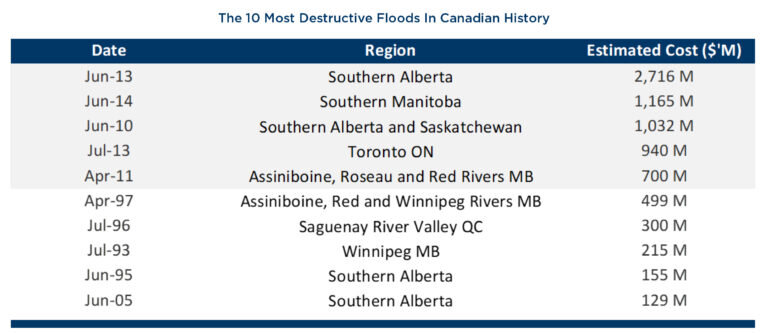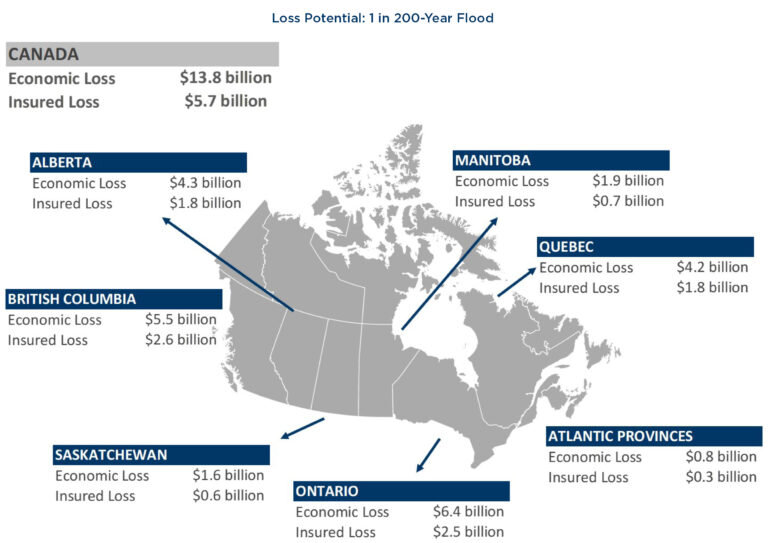Flooding may be a natural part of the water lifecycle, but the frequency and intensity of floods are becoming significantly more prolific. They are the most common natural disaster in the country and according to the Canadian Disaster Database, the number of floods in Canada has been increasing every decade for the past century. In fact, the five most destructive floods in Canadian history have all occurred since 2010. When we consider the associated economic, health and social costs, there’s a strong case for a national framework that proactively limits surge water risks in communities – especially for those near our coastlines and the Great Lakes.

A report produced by Dillon Consulting showed that the majority of cities in Ontario lacked flood-specific emergency plans. While this may not reflect all regions in Canada, it represents a dated view of our climate and the steps we need to take to protect our communities. Today’s cities face added risk from growing urbanization, outdated infrastructure and increased frequency of extreme events. Here’s how these factors are contributing to the problem:
Rapid Urbanization: The urban landscape influences infiltration and evapotranspiration, complicating our capacity to quantify their dynamics across a heterogeneous landscape at contrasting scales. Land use changes can have a huge impact on total stormwater runoff volumes – from 10% of rainfall in natural ground cover to 55% in a highly urbanized environment. Southern Ontario, especially the GTA region, is experiencing growing intensification which can exponentially increase the impact of the major flood.
Ageing Infrastructure: Development in a significant portion of urban areas occurred before any flood management measures were in place. In July 2015, a report entitled Weathering the Storms: Municipalities Plead for Stormwater Infrastructure Funding, assessed Ontario’s ability to cope with the impending impacts of climate change and severe weather patterns. The report estimates that $1.2 billion would be needed to replace stormwater infrastructure in six focus municipalities alone, with populations ranging from under 50,000 to more than 750,000.
Climate Change: Two aspects of global climate change are particularly relevant to river and coastal flooding: changes in extreme precipitation and changes in sea level. Data from the Ontario Ministry of the Environment and Climate Change expect precipitation to increase by ~11% from the 1981-2010 time period to the 2041-2070 time period. The concerning part is that heavy and very heavy precipitation days could increase by ~17% and ~33%, respectively.
To date, Ontario’s programs to manage floods and regulate floodplains have proven effective and the Ontario government has been a leading jurisdiction in Canada for flood planning and management. However, the three factors stated above are impairing our ability to maintain existing levels of flood protection and deal with emerging threats.

Predicting catastrophic events in advance is highly unlikely but building infrastructure to curtail these losses is possible and much needed. This will require varying levels of government, conservation authorities and private companies to come together to solve for the problem of surge water. From municipal policies to the construction of new real estate, evoking real change takes a team effort. The next question we need to ask ourselves is how can we become part of the solution.
Disclaimer: While we use reasonable efforts to include accurate and up-to-date information, we do not represent, warrant or promise (whether expressly or by implication) that any Content (including any information sourced from third parties or estimates calculated by us) is or remains available, accurate, complete and up-to-date, free from bugs, errors or omissions or fit or suitable for any purpose. R-LABS Canada Inc., its shareholders, directors, officers, employees, representatives and agents will not be liable to you or any third party for any indirect, special, incidental, punitive, exemplary or consequential damages in connection with the use of this information.




